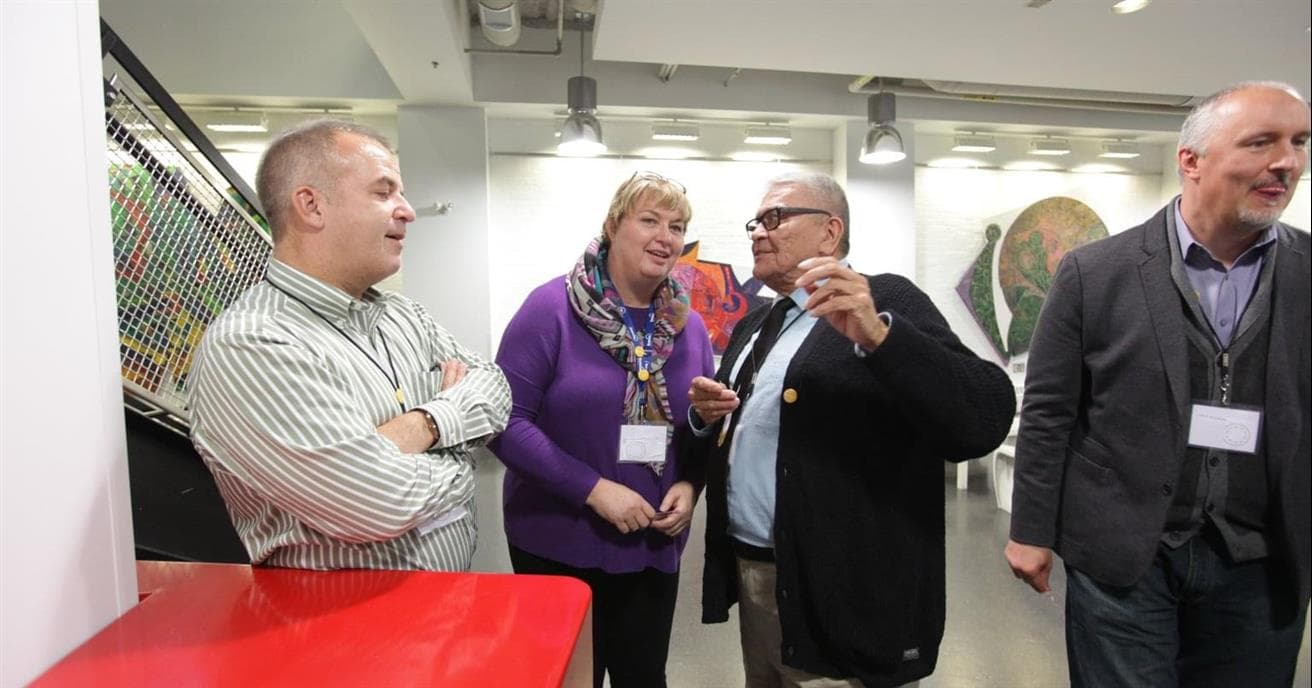Rick’s idea became the Suncor Energy Foundation (SEF) and since then, SEF has donated more than $260 million supporting a wide variety of organizations. Through a series of turning points, SEF now focuses on organizations that work toward reconciliation, inclusion and sustainability, and contributes to social innovation across Canada.
SEF, the early years
To celebrate the turn of the century and the construction of Suncor’s Millennium mine, SEF made three $1 million donations to initiatives chosen by employees in Sarnia, Ont., Fort McMurray and Calgary, Alta., with guidance from Evergreen—an organization that works to create cities that are livable, green and prosperous. In Calgary, employees chose to rebuild the community gardens at the historic site of Fort Calgary. In time, SEF noticed how the garden could grow not only food, but people too.
“The garden flourished in ways we didn’t expect,” reflects Cathy Glover, who retired as the longest standing director of SEF in 2017. “Not only did the garden provide volunteer opportunities for employees and food for local charities, but it also provided consistent, meaningful work for people. It was the first time we started to see how a donation could be much more than just the money.”
Finding SEF’s niche
Fast forward a few years, SEF worked with the community development organization Tamarack Institute to identify areas SEF could deepen its impact in community. Tamarack introduced SEF to the concept of social innovation and the book Getting to Maybe: How the World is Changed. Two recommendations from the book that influenced SEF’s thinking included:
- supporting people with a strong sense of calling, and
- supporting networking and information exchange among those who have the potential to tip a system in a new direction.
“These recommendations made us think about our donations differently,” says Cathy. “We began investing in administrative costs, experimentation, education and training for leaders, and eventually, the to help build the capacity of the nonprofit sector in Fort McMurray.”
The project brought together nonprofit organizations in the Wood Buffalo region of northern Alberta to discuss the community’s challenges and opportunities. One outcome included the merger of three nonprofits to create Fuse Social and better support the nonprofit sector in Wood Buffalo with training and leadership development. Find out more about the project.
These two recommendations also led the SEF team to organize the first SEF Gathering in 2013.
“As we approached SEF’s 15th anniversary in 2013, we knew we wanted to bring people together who had this strong sense of calling to address complex problems,” says Cathy. “At the end of the multi-day Gathering, participants didn’t want to leave. They had made new connections and wanted to keep the conversations going.”
One of these new connections led to the creation of the Energy Futures Lab, which brings together nonprofits, engineers, artists and policy makers to develop solutions for a low-emission and socially equitable energy future.
Looking ahead
The first SEF Gathering was another turning point for the Foundation. Seeing what was possible when people from various backgrounds come together has become core to SEF’s approach. The Foundation shifted its thinking from focusing on donations, to focusing on the interconnections between donations, partners and Suncor people.
Today, SEF continues to find ways to centre communities and people with the belief that working with those who are courageously seeking solutions, we can help spark change and propel progress for generations ahead.




.jpg?mw=304&modified=20211013142710&hash=C587E19FE133A124F81B3547FB7C3D14)